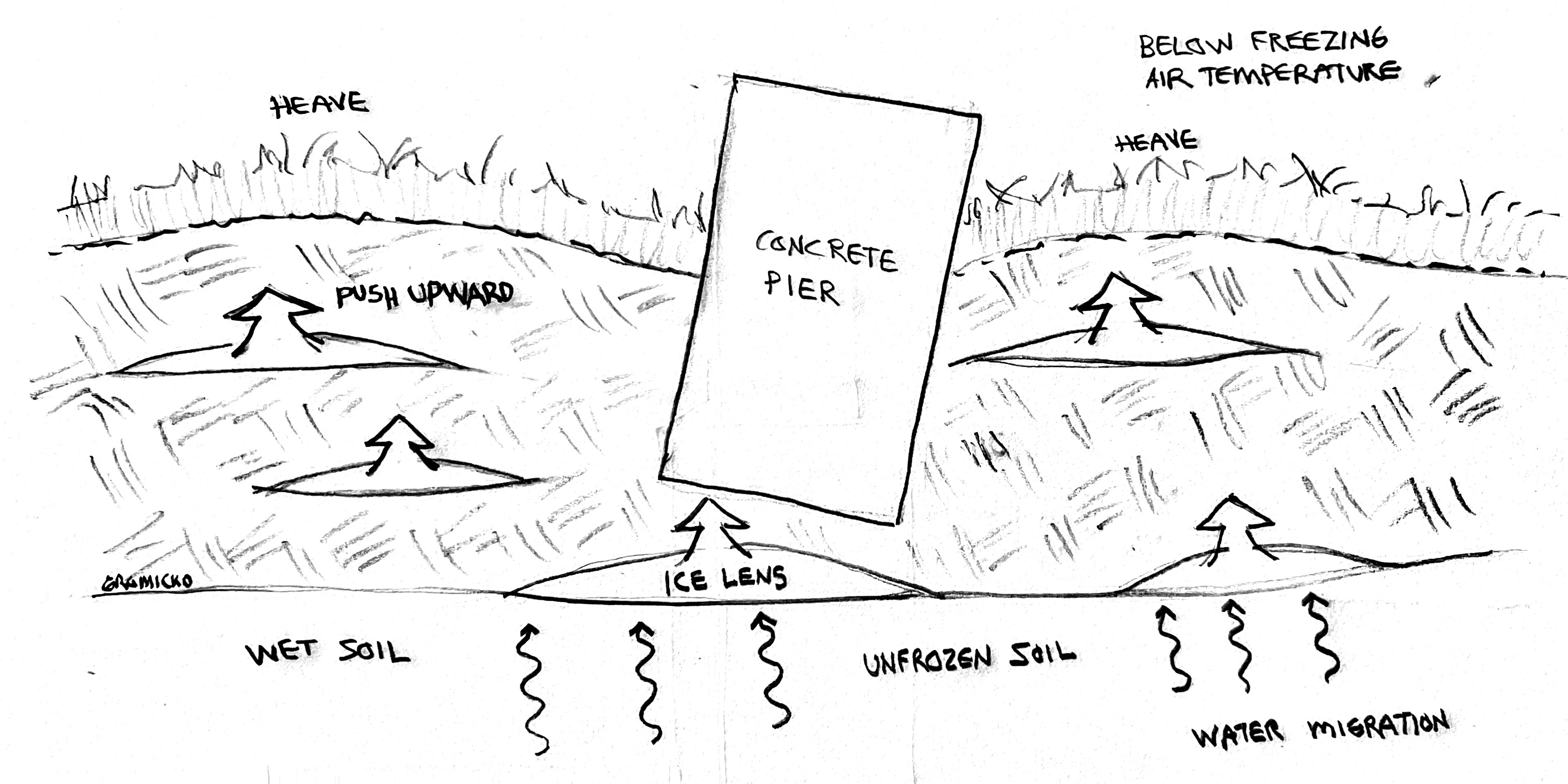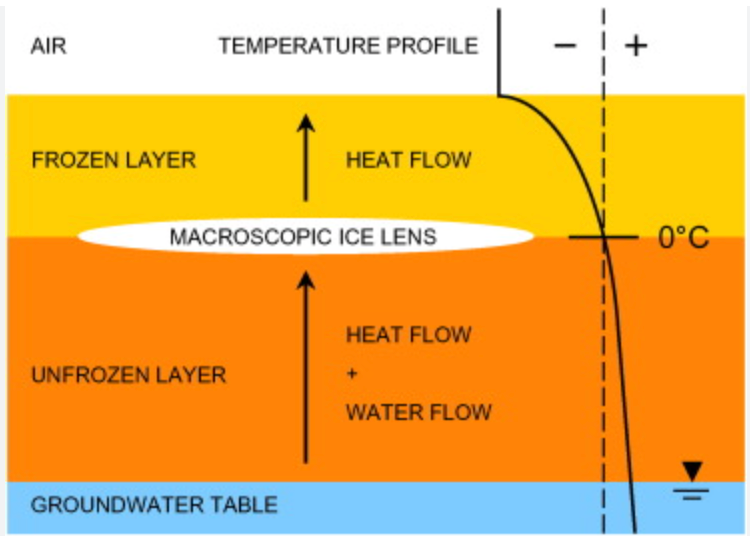Frost Heave Caused by Ice Lens
by Nick Gromicko and Ben Gromicko

An ice lens is a layer or band of pure ice that forms within freezing, moist soil. These lenses can grow and stack in stratified layers, causing the ground above to push upward or lift, resulting in frost heave.
Conditions That Promote Ice Lens Formation
Ice lenses form when the following three conditions are met:
- Freezing Temperatures at the Surface. There must be a consistent downward-moving freezing front, usually during cold seasons when the air temperature is below 32°F (0°C). The soil doesn’t freeze all at once; rather, a freeze line slowly moves downward through the soil.
- Availability of Water. Unfrozen groundwater or soil moisture must be present beneath the freezing zone. This moisture supplies the freezing front with liquid water, which then migrates upward through capillary action and freezes.
- Frost-Susceptible Soil. Soils that are fine-grained, such as silts and clays, are most susceptible. These soils have small pore spaces that support capillary water movement, enabling water to rise toward the freezing front.
Mechanism of Ice Lens Growth

The formation of ice lenses is based on thermodynamics and capillarity:
- As the upper layer of soil begins to freeze, it extracts latent heat from the surrounding unfrozen water.
- This initiates a temperature gradient, drawing liquid water from the deeper, unfrozen layers upward.
- The migrating water freezes when it reaches the colder zone, forming a distinct lens of ice.
- As long as the freezing continues and unfrozen water remains available, the ice lens grows thicker.
This process can repeat itself, forming multiple stacked lenses and pushing the soil surface upward. This is the essence of frost heave.
Why Ice Lenses Matter in Construction and Inspection
For home inspectors and builders, understanding ice lenses is critical because:
- Frost heave can damage foundations, especially shallow footings, walkways, driveways, and slabs not properly protected against freezing.
- Moisture control and soil selection are essential during site preparation.
- Proper use of non-frost-susceptible fill, insulation, or drainage systems can help prevent the conditions that lead to ice lens formation.
Ice lens formation—and the associated problem of frost heave—is a serious concern for building officials, engineers, and inspectors, primarily in cold climates, where soils freeze seasonally and remain frozen for extended periods. The phenomenon is not uniform globally; it’s region-specific, depending on climate, soil type, and groundwater availability.
Conclusion
Ice lenses are based upon the principle that when certain soils are exposed to freezing temperatures and have access to liquid water, capillary action draws water toward the freezing front, where it freezes and accumulates into layered ice bands. These ice lenses can expand and lift the soil, leading to structural damage known as frost heave. Understanding the mechanics behind ice lens formation is crucial for proper building design, especially in cold climates.
